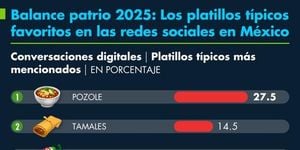As artificial intelligence (AI) barrels forward, reshaping industries and upending traditional notions of work, a new divide is emerging in the American job market. On one side are the white-collar professions—once seen as the safe, prestigious path for college graduates—now facing an uncertain future. On the other, the skilled trades, long overlooked by many young people, are experiencing a surprising renaissance. According to recent warnings from leading CEOs and a growing chorus of experts, the next five years could see up to 50% of entry-level white-collar jobs vanish, replaced by algorithms and automation. But amid the doom and gloom, a new generation is finding opportunity in places their parents may never have expected.
It’s a shift that’s as much about economics as it is about technology. The cost of a four-year college degree in the United States has soared, with the average annual price tag now topping $38,000—and approaching $60,000 for private institutions, according to the Education Data Initiative. When you factor in interest on student loans and the income lost while in school, the total bill for a bachelor’s degree can balloon to over $500,000. Unsurprisingly, more than 57% of Gen Zers surveyed by Jobber, a software company for service businesses, cite student loan debt as a major concern about attending college. For many, the math simply doesn’t add up.
Meanwhile, the job market for new college graduates has grown shakier. The unemployment rate for 23-to-27-year-old college grads now hovers around 4.6%, up from 3.2% just six years ago, as reported by the Federal Reserve Bank of St. Louis. In stark contrast, non-college-educated workers in the same age range have seen only a modest 0.5% uptick in unemployment over the same period. Economists point to this as an early warning sign that AI is already nibbling away at entry-level positions once reserved for young degree holders, especially in fields like finance, technology, law, and consulting.
"AI technologies are advancing rapidly, and we’re heading for a crisis in white-collar employment," warned one CEO, echoing a sentiment that’s gaining traction across boardrooms and think tanks. As AI systems become ever more adept at automating routine tasks, the once-clear path from college to cubicle is beginning to look a lot less certain.
This uncertainty is driving a quiet revolution among young Americans. Take Jacob Palmer, for example. At just 23, Palmer has already launched his own electrical company, a business he started in 2024 after opting out of college and beginning as an apprentice electrician. "I am very happy doing what I am doing now because it has given me the opportunity to work for myself and be independent," Palmer told CBS News. His company generated $90,000 in revenue during its first year and is on track to top $150,000 in 2025—a more than 30% increase, all without a college diploma.
Palmer’s story is increasingly common. Skilled trades—jobs like electrician, plumber, welder, mason, and HVAC technician—are attracting a new wave of young people who are wary of student debt and eager for careers that are, as they see it, "hard to automate." Indeed, 77% of Gen Z respondents in the Jobber survey said it’s important that their future job be resistant to automation, specifically naming trades such as carpenter, plumber, and electrician as safe bets. By contrast, they expressed less confidence in the staying power of roles like software developer, data analyst, or accountant—ironically, the very jobs that once lured students into college lecture halls.
"That route is losing some of the stigma," said David Asay, president of Advantage Reline, a pipe rehabilitation company in Mesa, Arizona. "The perception among that younger group is no longer, 'Oh, you’re working construction, you didn’t go to school?' It’s, 'What a cool skillset. You’re making a good career path.'"
Changing attitudes are evident in classrooms as well. Marlo Loria, director of career and technical education at Mesa Public Schools, reports that more students are enrolling in welding, construction, and auto shop programs than there is space for. The trades are no longer a fallback—they’re a destination.
What’s driving this shift, beyond the financial calculus? For one, there’s a growing sense that blue-collar jobs offer something that robots and algorithms simply can’t replicate: the human touch. Vinnie Curcie, founder and CEO of OC Solar in Irvine, California, points out that while AI may soon handle much of the sales and project management work in solar installation, the field work remains secure. "More people are interested in the field because they know that’s where the job security is," Curcie told CBS News.
Palmer agrees. "I don’t feel overly threatened by the growth of AI in my industry. That will be a pretty impressive robot that can do my job one day, if it ever happens," he said. Kayden Evans, an 18-year-old high school senior and aspiring field technician, echoed this sentiment: "I wouldn’t say I am worried about AI because where I want to grow is as a field technician, and even though it helps, I don’t think AI can take that over. AI can’t go out in the field and take apart an engine."
Still, the looming "white-collar recession" is more than just a talking point for CEOs. The potential elimination of up to half of all entry-level white-collar jobs in the next five years, as predicted by industry leaders, raises uncomfortable questions for policymakers, educators, and students alike. Which jobs will survive? How should schools prepare young people for a future where the value of a college degree is no longer a given?
Some experts argue that the answer lies in a more balanced approach—one that recognizes the enduring value of skilled trades while also reimagining white-collar work for the age of AI. That could mean investing in reskilling programs, expanding apprenticeships, and making it easier for workers to move between fields as technology evolves. Others call for a broader rethink of the education system itself, to better align with the realities of a fast-changing job market.
For now, the message from the front lines is clear: the rules of the game are changing. The path to a stable, well-paying career no longer runs exclusively through a college campus. As automation accelerates and the cost of higher education continues to climb, more young Americans are turning to the trades—not as a last resort, but as a first choice. And in a world where AI can crunch numbers and draft reports but can’t wire a house or repair a tractor, that choice looks smarter by the day.
With the landscape of work in flux, today’s students, workers, and employers face tough choices and new opportunities. Whether the coming years will bring a crisis or a renaissance depends, in large part, on how society adapts—and on how willing we are to see value in skills that can’t be coded into an algorithm.




